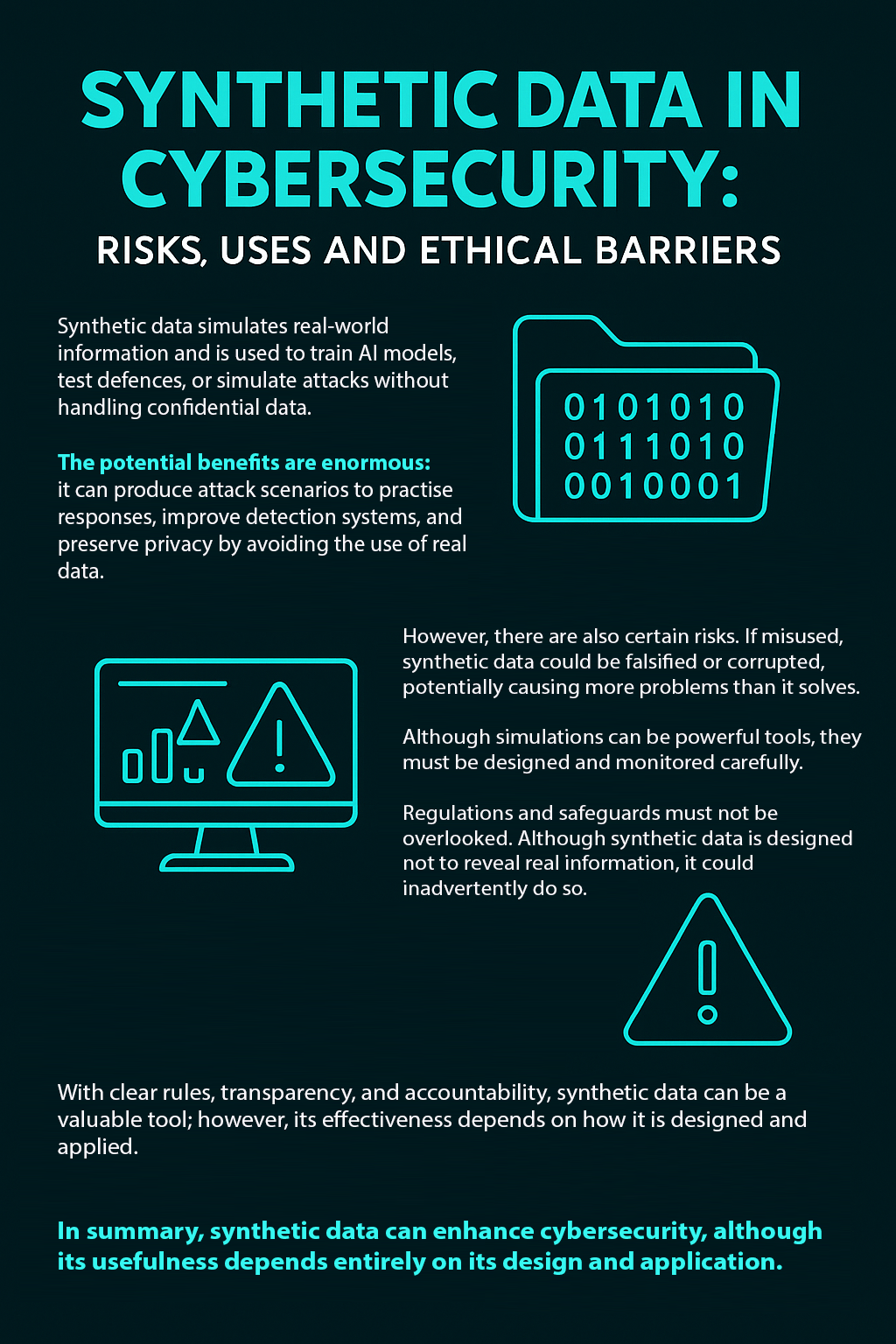4th EU-GUARDIAN NEWSLETTER
October 2025
🚀 In future editions, we will launch a series of Reflections on the integration of AI in cyber defence, in which we will explore the ethical, legal and technical dilemmas that will shape the future of digital security in Europe. A critical and strategic look at how to build a more reliable, responsible and prepared cyber defence system in the face of the challenges ahead. From data to decision: ethical and technical challenges of AI in cyber defence
Synthetic data is gaining increasing attention in the field of cybersecurity.
Artificial data simulates real-world data and is used to train AI models, test defenses, or simulate attacks without having to handle confidential information.
This keeps our security measures intact without compromising personal or confidential information.
Its potential is enormous: it can produce attack scenarios to practice responses, improve detection systems, and preserve privacy by not using real data.
However, there are certain dangers.
If synthetic data is generated with flaws or biases, systems trained with this data will inherit those flaws.
Acting as simulations, they sometimes fail to fully capture the complexity of real attacks, instilling a false sense of security.
Therefore, privacy cannot be forgotten either.
Although it is said that this synthetic data does not reveal real information, if it is not well crafted, it can inadvertently do so.
With rules, transparency, and accountability, synthetic data can be a wonderful tool;
however, if misused, it could cause more problems than it solves.
In summary, synthetic data can improve cybersecurity, although its usefulness depends in all respects on its design and application.


‘Funded by the European Union. The opinions and views expressed are, however, solely those of the authors and do not necessarily reflect those of the European Union or the European Commission. Neither the European Union nor the granting authority can be held responsible for them.’
EU GUARDIAN- EDF-2021-CYBER-R-CDAI-2